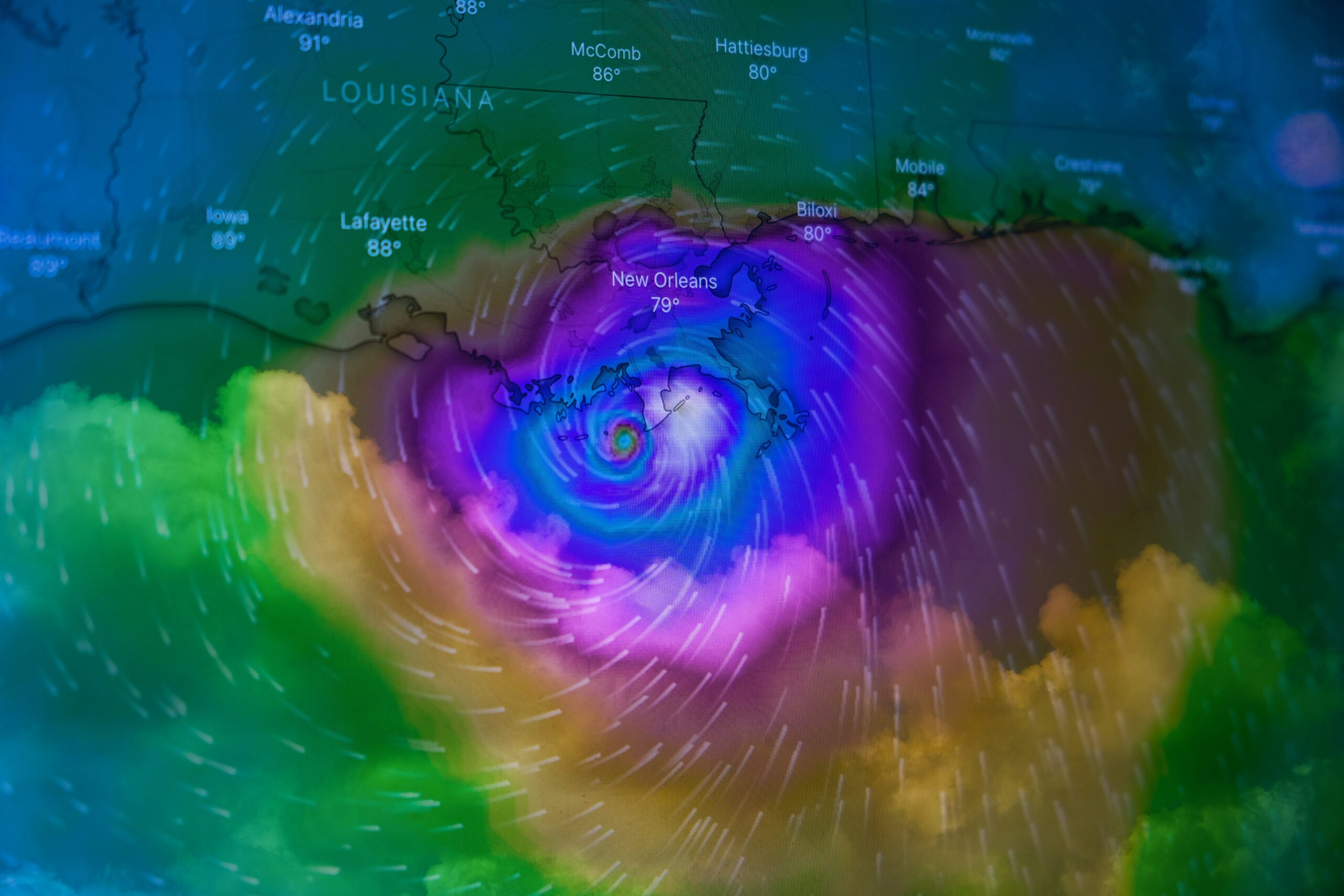Introduction to the Snow Storm Forecast
Southern Ontario is currently bracing itself for an impending snow storm that is anticipated to bring significant winter weather conditions across the region. As of now, meteorological reports indicate that the system is developing and expected to move through the area shortly. Residents have already begun to feel the impact of fluctuating temperatures, with a sharp drop in degrees contributing to the likelihood of accumulating snow. Weather experts emphasize the necessity for vigilance, as the storm could generate considerable amounts of snow, potentially exceeding 20 centimeters in some regions.
The upcoming snow storm is poised to disrupt daily life, impacting not only local commuting conditions but also recreational activities. Heavy snowfall, combined with strong winds, may create whiteout conditions on the roads. Consequently, residents should prepare for disruptions in public transportation and increased travel times. Authorities are urging individuals to exercise caution when traveling during the expected peak of the storm. The combination of icy roads and reduced visibility is likely to make driving hazardous, so precautions are essential.
This weather event is a stark reminder of the winter season’s challenges. Families and individuals are encouraged to stock up on essential supplies, review their emergency preparedness plans, and stay informed about the latest weather advisories. Various weather tracking apps and local news sources will provide real-time updates and alerts on the development of the storm.
As we delve deeper into the forecast, this section highlights the critical aspects of the anticipated snow storm and sets the stage for understanding its potential effects on Southern Ontario. The forthcoming detailed forecast will outline specific timing, snowfall amounts, and safety measures to navigate the impending winter whirlwind.
Understanding Snow Storms: What Causes Them?
Snow storms are complex meteorological phenomena that arise from the interaction of various atmospheric conditions. To grasp the dynamics behind these storms, it is essential to understand the essential components involved: cold air masses, moisture, and weather fronts. In Southern Ontario, the presence of these elements can lead to significant snowfall events.
Cold air masses are typically characterized by their low temperatures, which can originate from polar regions. When these cold air masses move southward, they can collide with warmer, moist air rising from the Great Lakes. This juxtaposition creates instability in the atmosphere, facilitating the development of precipitation. When this moist air is cooled sufficiently, it condenses into clouds, leading to the formation of snow.
Moisture in the atmosphere also plays a crucial role in the development of snow storms. Areas near water bodies, such as the Great Lakes, have a higher humidity level, which can contribute to increased precipitation. When cold air travels over the warmer waters of the lakes, it absorbs moisture, which is then deposited as snow when it reaches colder regions. This lake-effect snow phenomenon is common in Southern Ontario and can lead to localized, heavy snowfall.
Additionally, weather fronts, which are the boundaries between different air masses, can significantly influence snow storm formation. A cold front, for example, may act as a lifting mechanism, forcing warm moist air to rise rapidly. As this air ascends, it cools and the moisture condenses to form clouds and precipitation. This interplay of cold air, moisture, and weather fronts is fundamental in understanding how snow storms can develop, particularly in areas like Southern Ontario which are prone to such winter weather events.
Detailed Snowfall Predictions for Toronto and the GTA
The upcoming snowstorm affecting Southern Ontario is projected to be particularly impactful for Toronto and the Greater Toronto Area (GTA). Meteorologists have employed various forecasting models to predict the snowfall amounts and timing, providing residents with critical information to prepare for this winter weather event. According to recent forecasts, the anticipated snowfall accumulation for Toronto is expected to range between 15 to 25 centimeters, especially during the height of the storm.
Timing is a crucial factor in understanding the storm’s impact. The snowfall will likely begin in the early morning hours and intensify throughout the day, with the heaviest snow expected between 10 AM and 3 PM. During this peak period, residents can prepare for potentially whiteout conditions that could severely affect visibility and travel. The timing of the storm’s escalation means that individuals should plan accordingly for any required commutes or essential activities.
In the surrounding areas of the GTA, predictions vary slightly depending on geographical factors. Regions to the north and west of Toronto may experience slightly higher snowfall totals, while areas closer to the lake may see less accumulation but heavier rain mixed with snow. As the storm progresses, it is advisable for residents in these areas to stay updated through reliable weather channels or mobile applications to receive real-time updates on changing conditions.
Moreover, when preparing for the storm, residents should consider potential disruptions to local services, including public transportation and emergency services. Ensuring that vehicles are winter-ready and stocking up on necessary supplies will be prudent as the storm approaches. Overall, keeping informed about the detailed snowfall predictions will empower residents to take the right precautions and be prepared for the winter whirlwind ahead.
Impacts on Commuting: What Residents Should Know
The anticipated snow storm in Southern Ontario is poised to significantly affect daily commuting. With snowfall projected to accumulate rapidly, residents should prepare for a variety of disruptions on the roads and public transport systems. The onset of severe winter weather often leads to hazardous driving conditions, including reduced visibility and slick road surfaces. Consequently, road closures may be implemented in areas heavily impacted by snow accumulation, restricting vehicle movement and necessitating the use of alternative routes.
Public transport users are also advised to remain vigilant. Buses and trains may experience delays or reroutes as transit authorities adapt to weather conditions. Residents should check their local transit service updates frequently for real-time information, as these services may operate on a modified schedule or run fewer trips during the storm. Planning ahead can mitigate the impact of the weather on daily travel and ensure that one arrives at their destination safely.
For those who must drive, several safety tips are essential during such weather events. It is advisable to equip vehicles with winter tires to improve traction on icy roads. Additionally, motorists should reduce speed and increase following distances to allow for longer stopping times. Ensuring that windshield wipers are functioning effectively and keeping headlights on enhances visibility. In the event of becoming stranded, it is crucial to remain with the vehicle and signal for assistance while conserving fuel and keeping warm.
Ultimately, residents of Southern Ontario should stay informed and prepared as this winter storm approaches. By understanding the potential impacts on commuting and taking proactive measures, individuals can navigate this challenging weather effectively and prioritize their safety on the roads and public transit services.
Safety Tips for Dealing with Severe Winter Weather
As Southern Ontario braces for the upcoming snow storm, it is essential for residents to prioritize their safety and well-being. Preparing for severe winter weather requires careful planning and awareness of potential hazards. One of the critical steps is assembling an emergency preparedness kit. This kit should include essential supplies such as non-perishable food, bottled water, flashlights with extra batteries, a first-aid kit, and a battery-operated radio. Additionally, ensure that important documents are easily accessible, and consider including a charger for your mobile phone, as communication is crucial during emergencies.
When venturing outdoors, appropriate winter clothing is vital to protect against extreme cold and snow. It is advisable to wear multiple layers of clothing, including thermal undergarments, insulated outerwear, and a waterproof coat. Accessorizing with hats, gloves, and scarves can help retain body heat and safeguard against frostbite. Footwear should be both waterproof and insulated to prevent slipping and keep feet warm, particularly when traversing snowy or icy surfaces. Always check weather forecasts and local alerts before heading outside, and if conditions become severe, it might be best to stay indoors.
In the event of power outages, which are common during winter storms, residents should prepare in advance. This includes knowing how to safely use a generator and refraining from using outdoor equipment indoors due to the risk of carbon monoxide poisoning. Keep an adequate supply of blankets and sleeping bags on hand to stay warm if the heating system fails. Additionally, it is helpful to have a few candles, but exercise caution to prevent fire hazards. Understanding these safety measures can greatly reduce risks and enhance security during the turbulent winter weather expected in Southern Ontario.
Historic Snow Storms in Southern Ontario: A Brief Overview
Southern Ontario has a storied history of significant snow storms that have left lasting impacts on the region’s infrastructure and daily life. From record-setting blizzards to severe winter weather events, the area has experienced various catastrophic snow storms that serve as benchmarks for future weather patterns.
One of the most notable events occurred in February 1978, when Southern Ontario was hit by an unprecedented snow storm that deposited over 40 centimeters of snow in many areas. This blizzard not only disrupted transportation but also tragically resulted in several fatalities. The sheer volume of snow and extreme wind conditions led to widespread power outages, leading to a long-lasting impact on the community.
In January 1999, another staggering snow storm blanketed the region, causing massive disruptions in both urban and rural areas. Known as the “Great Blizzard of 1999,” this storm led to municipalities declaring states of emergency as roadways became impassable. The accumulation of snow, combined with ice and freezing rain, made recovery efforts arduous and prolonged. A significant aspect of this storm was the prolonged nature of the weather event; it lasted several days, showcasing the capacity for Ontario winters to produce extended hazardous conditions.
More recent storms, such as those in 2016 and 2020, have further illustrated the variability and unpredictability of winter weather in Southern Ontario. These events prompted local governments to reassess snow removal operations and emergency response strategies. By examining these historic snow storms, it becomes clear that the upcoming storm could likewise bring severe challenges that require careful preparation and community resilience. Understanding past events will assist residents in grasping the potential severity of the winter conditions they may face ahead.
Community Response and Support During the Snow Storm
The impending snow storm in Southern Ontario has prompted a coordinated response from local communities and organizations, aiming to ensure the safety and well-being of residents during this challenging weather event. Community centers across the region are stepping up to offer shelter for those in need, particularly for individuals who are homeless or may have difficulties staying warm in their homes. These centers will function as safe havens, providing not only warmth but also essential amenities such as food, blankets, and medical assistance if required.
Moreover, various volunteer organizations are mobilizing to provide assistance to vulnerable populations. Local food banks and charitable groups are preparing to distribute emergency supplies, ensuring that those affected by the snow storm have access to food and essential resources. Volunteer efforts will extend to delivering these supplies directly to homes, particularly for elderly residents or those with mobility issues who cannot venture outside safely during inclement weather. The spirit of community solidarity will be critical in ensuring that everyone, especially the most vulnerable, receives the support they need.
Local authorities are also playing a vital role in safety monitoring during the storm. Weather updates will be continuously communicated to the public, and emergency response teams will be on standby to address any incidents that may arise due to heavy snowfall or hazardous road conditions. Additionally, people are encouraged to stay informed through reliable sources, such as local news outlets or social media channels managed by city officials. This proactive approach is essential in maintaining public safety, as communities prepare for the potential impact of the winter storm.
Through a combination of community engagement, volunteer support, and vigilant monitoring by local authorities, Southern Ontario’s residents can navigate the challenges posed by the upcoming snow storm with a sense of collective responsibility and mutual assistance.
After the Storm: Cleanup and Recovery Efforts
As the winter storm subsides, the subsequent phase of cleanup and recovery becomes imperative for Southern Ontario residents. Municipalities typically initiate their snow removal protocols to ensure roads, sidewalks, and public pathways are cleared for safe and accessible travel. Snow plows and salt trucks are dispatched to major thoroughfares first, subsequently expanding their efforts towards secondary streets and residential areas. Residents may notice a steady rhythm of equipment working diligently to restore normalcy. The city maintenance teams prioritize the areas heavily affected by snowfall and ice accumulation, deploying resources effectively to manage the aftermath of the storm.
Residents are encouraged to take proactive measures regarding snow removal on their properties. It is generally advisable to begin clearing snow shortly after the storm passes to avoid heavy, compacted snow accumulation, which can be challenging to remove. Those who are physically able can utilize snow shovels or snow blowers to clear driveways and walkways. It is essential to be mindful of local regulations, as some municipalities implement bylaws concerning snow removal from sidewalks adjacent to homes. By adhering to these regulations, residents can contribute to community safety and accessibility.
Moreover, community spirit plays a vital role in the recovery efforts. Neighbors can extend support by assisting those who may be elderly or physically challenged with their snow removal tasks. Acts of kindness, such as helping a neighbor clear their driveway or offering them a warm beverage, can significantly enhance community resilience in such challenging weather conditions. The collective efforts in addressing the aftermath of the storm not only improve the immediate environment but also foster a sense of camaraderie among residents. As Southern Ontario moves forward, the commitment to collaborative recovery will play a crucial role in navigating the challenges posed by winter storms.
Conclusion: Preparing for the Winter Ahead
As winter approaches Southern Ontario, it is paramount that residents prepare for the snowstorm conditions that may arise. The previous sections highlighted the various aspects of upcoming winter weather, including expected snowfall amounts, temperatures, and potential impacts on daily life. Such preparations are crucial for ensuring personal safety and minimizing disruptions. By remaining vigilant and informed, individuals can better navigate the difficulties presented by severe winter weather.
One of the key takeaways involves the significance of staying updated through reliable weather forecasts and advisories. By frequently checking local news or weather apps, residents can obtain real-time information about impending storms, enabling them to make informed decisions regarding travel and outdoor activities. Moreover, preparation should extend beyond merely monitoring the weather; individuals must also implement proactive measures, such as creating an emergency kit, winterizing their homes, and ensuring that their vehicles are equipped for cold conditions.
Additionally, it is essential that communities come together to support one another during challenging winter periods. Neighbors can assist one another by sharing resources or providing help to those who may be more vulnerable, such as the elderly or disabled. Being part of a supportive community creates a more resilient environment, fostering a collective sense of preparedness and safety.
In summary, as residents of Southern Ontario approach the winter season, they must prioritize preparation for potential snowstorms. By staying informed, taking proactive measures, and fostering a community spirit, they can effectively mitigate the impacts of severe winter weather. Embracing these strategies not only enhances personal readiness but also contributes to a safer and more resilient community during the cold months ahead.



